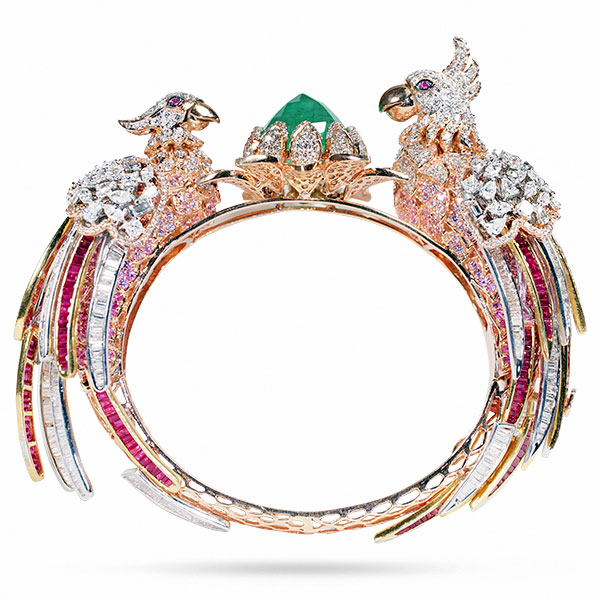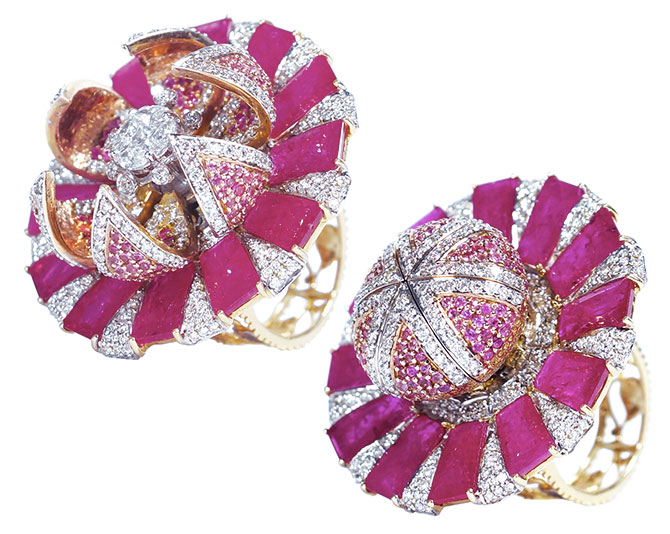
The winter 2018 edition of the India International Jewellery Show (IIJS)—held at the Bombay Exhibition Centre in Goregaon, a suburb of Mumbai, in early February—was highly successful. Traditionally a smaller show than its counterpart in July, the Signature show not only grew its space by 200 booths this year, but also saw a spike in attendance, from 11,000 people in 2017 to 14,500 in 2018.
The IIJS is organized by the Gem & Jewellery Export Promotion Council (GJEPC), which works closely with the Indian government’s ministry of commerce to represent the domestic jewelry industry’s interests at home and abroad.
This year’s show reflected the Indian industry’s two main goals for 2018. The first is intended to address domestic diamond demand, while the second is aimed at doing more business overseas.
Although the vast majority of Indian women own gold, only 10 percent own a diamond, a figure the country’s Diamond Producers Association (DPA) believes it can grow over the next decade, thanks to a rising middle class in the country, extensive marketing campaigns to reach young people, and education outreach to retailers and consumers.
As such, the DPA invested $7 million to promote diamond jewelry to Indian customers in 2018. Because of this push, there was a sizable showing of diamond stone suppliers and diamond jewelry designers and manufacturers at the show.

Meanwhile, the GJEPC continued its efforts to promote Indian-made jewelry abroad. Pramod Kumar Agarwal, who was appointed GJEPC chairman in January, says he expects exports of Indian jewelry, gemstones, and diamonds to increase 15 to 20 percent this year. In addition, he says he’d like the industry to achieve a “tall” target of $60 billion in exports within the next few years. (According to the GJEPC, India’s gem and jewelry exports totaled $43.2 billion during fiscal 2017, a rise of 10 percent over the prior year.)
“We are looking for new markets that are being left behind—for example, Russian countries and Latin America,” Agarwal says. “There’s a lot of interest in [Indian] manufacturing, quality, and design.”
Agarwal says he will continue to engage the Indian government to ensure “ease of doing business.” To that end, the chairman praised the government and India’s Goods and Services Tax (GST) Council for reducing the GST rate (an indirect tax) on diamond and precious stones from 3 percent to 0.25 percent as an important first step.
Promoting a “Made in India” campaign was also top of mind for GJEPC officials, whose goal is to make Indian artisans and their centuries-old jewelry-making techniques coveted around the world.
Top: Double-shaded pink sapphire parrot bracelet with mobile diamond and ruby baguette feathers and round emerald in 18k gold; $25,000; Anil Bharwani Fine Jewellery; info@bharwanijewellers.com; facebook.com/anilbharwaniofficial